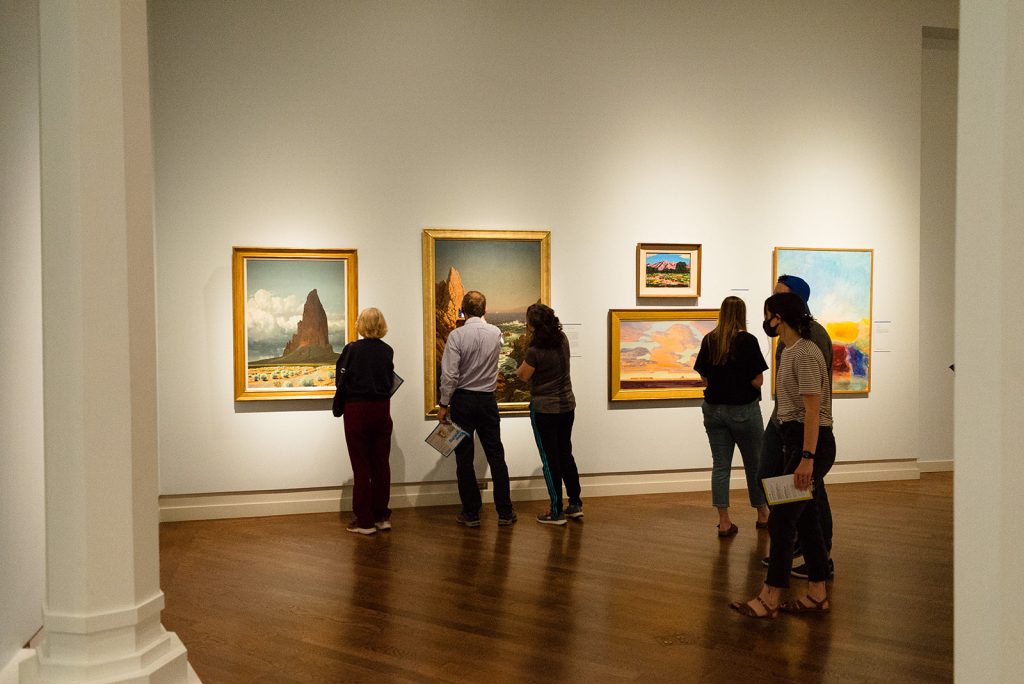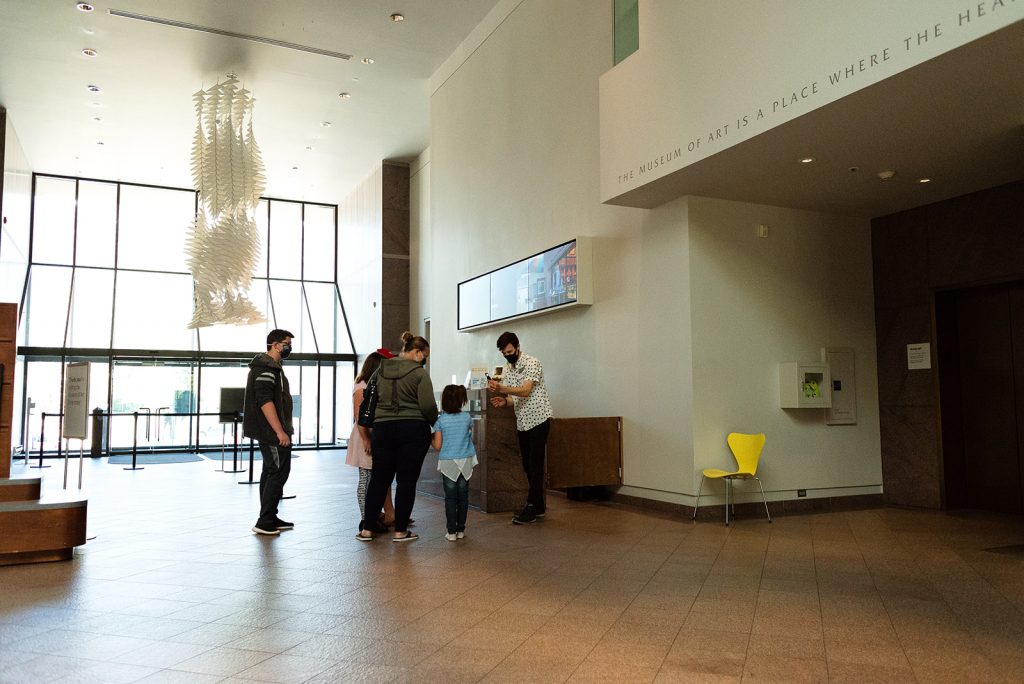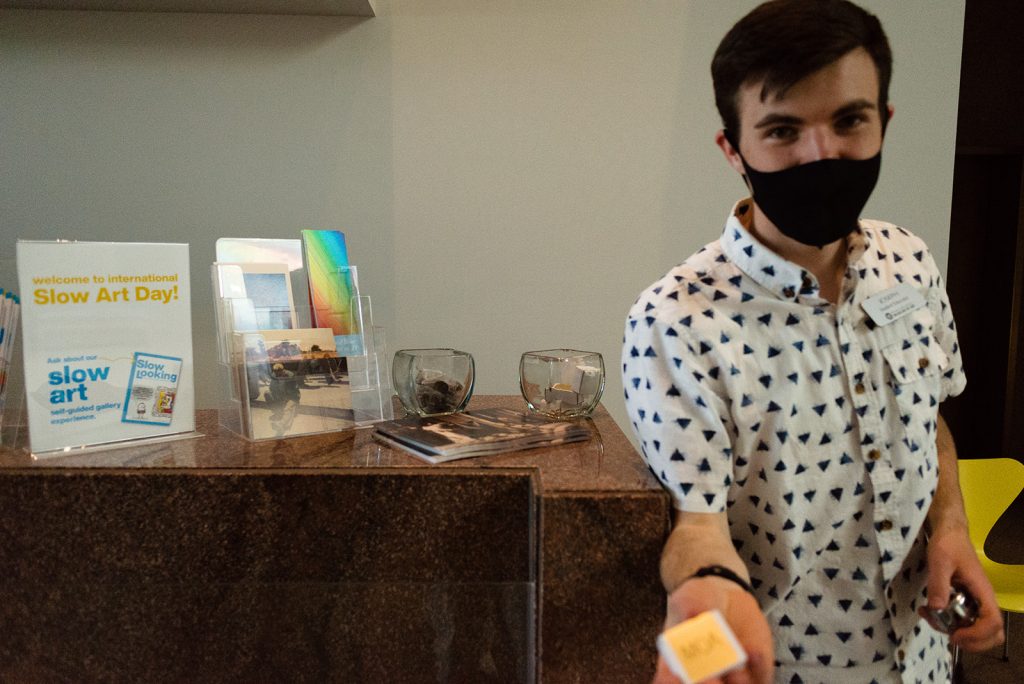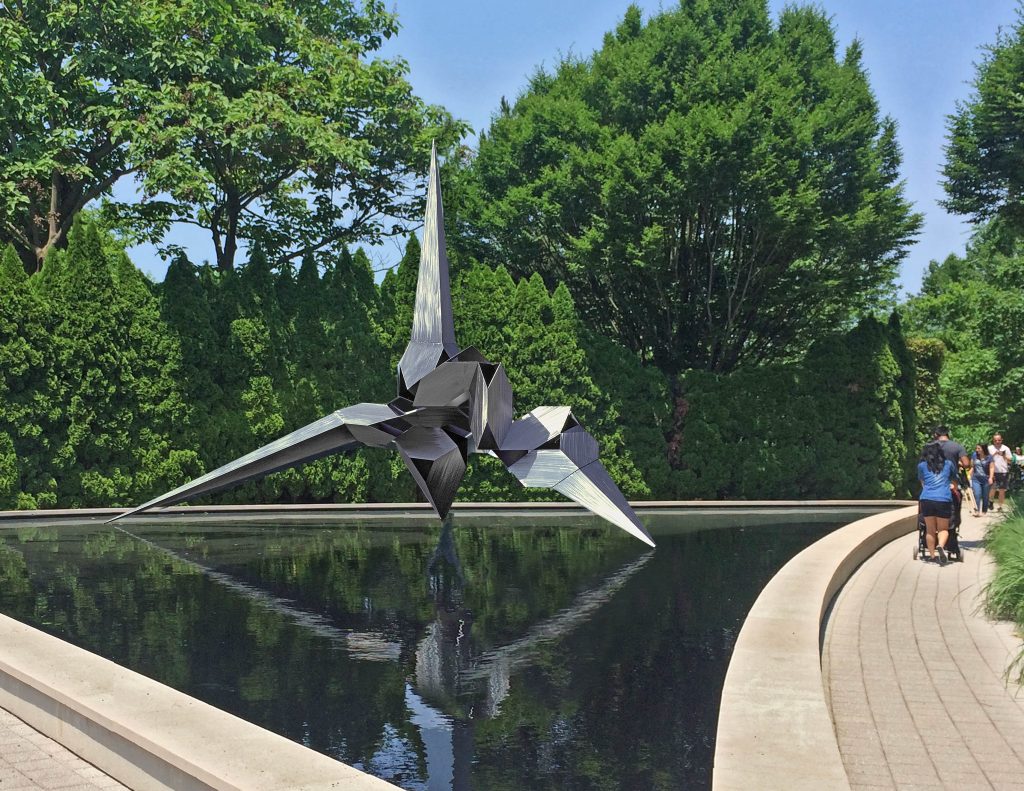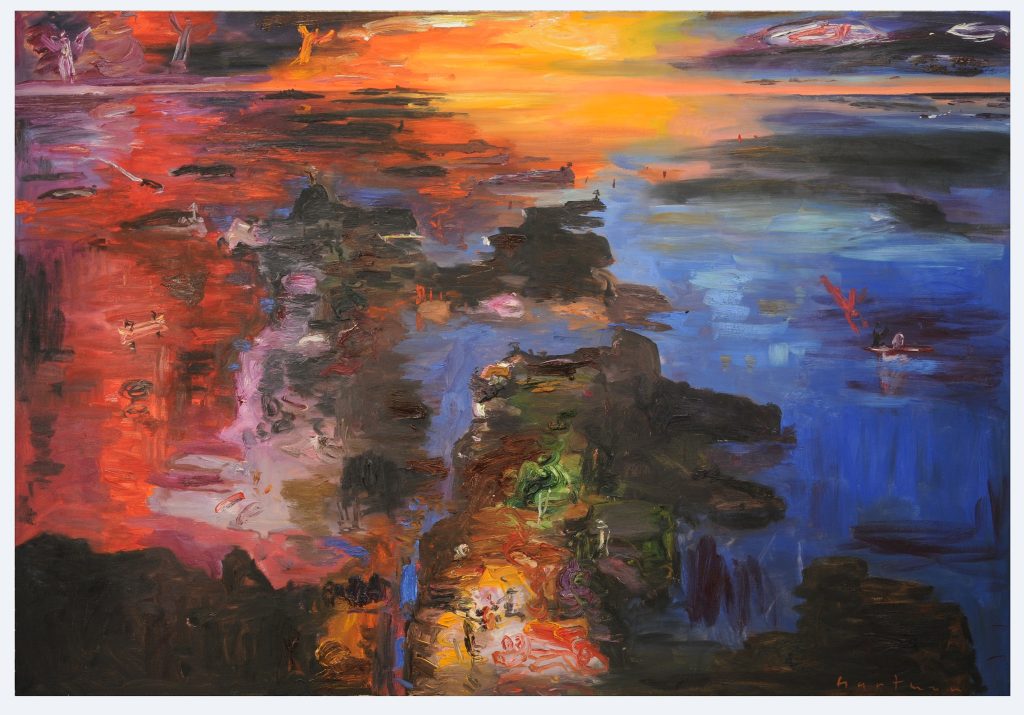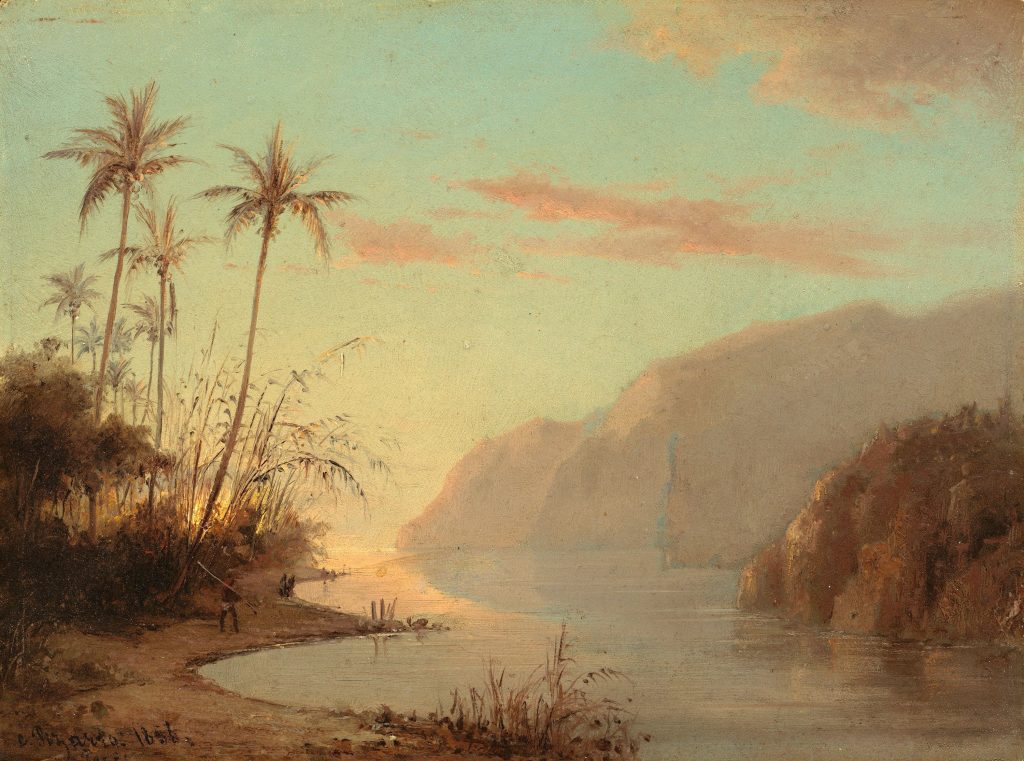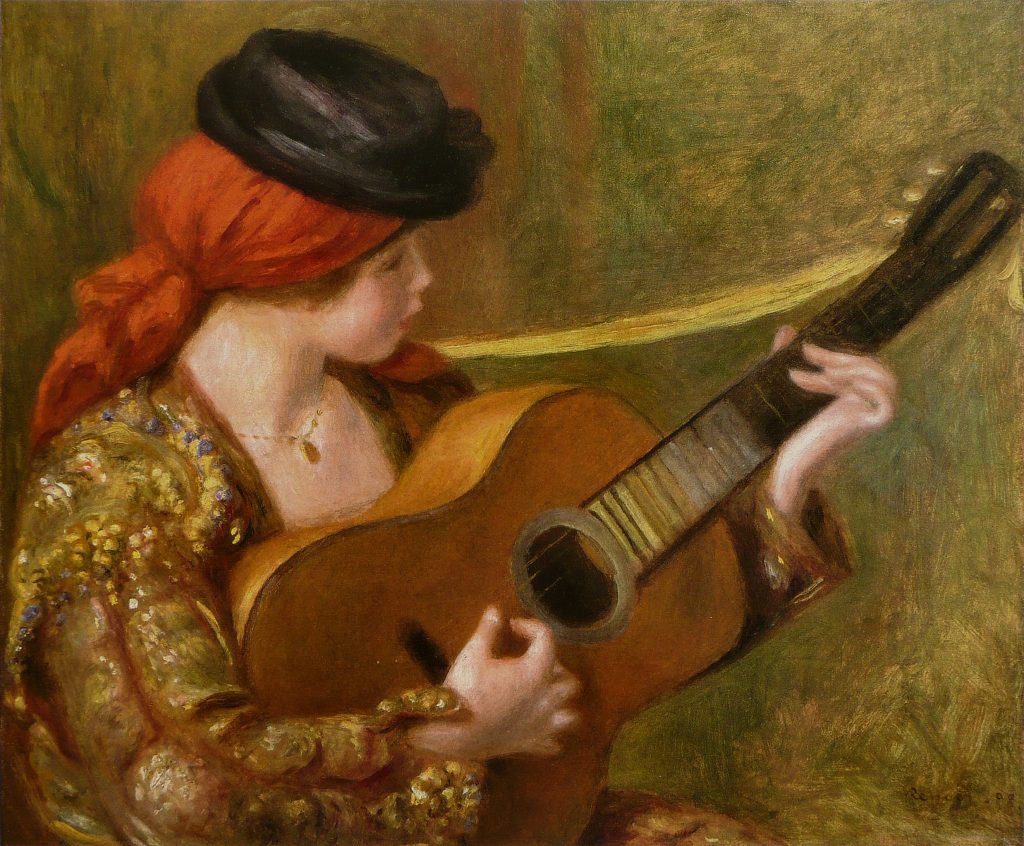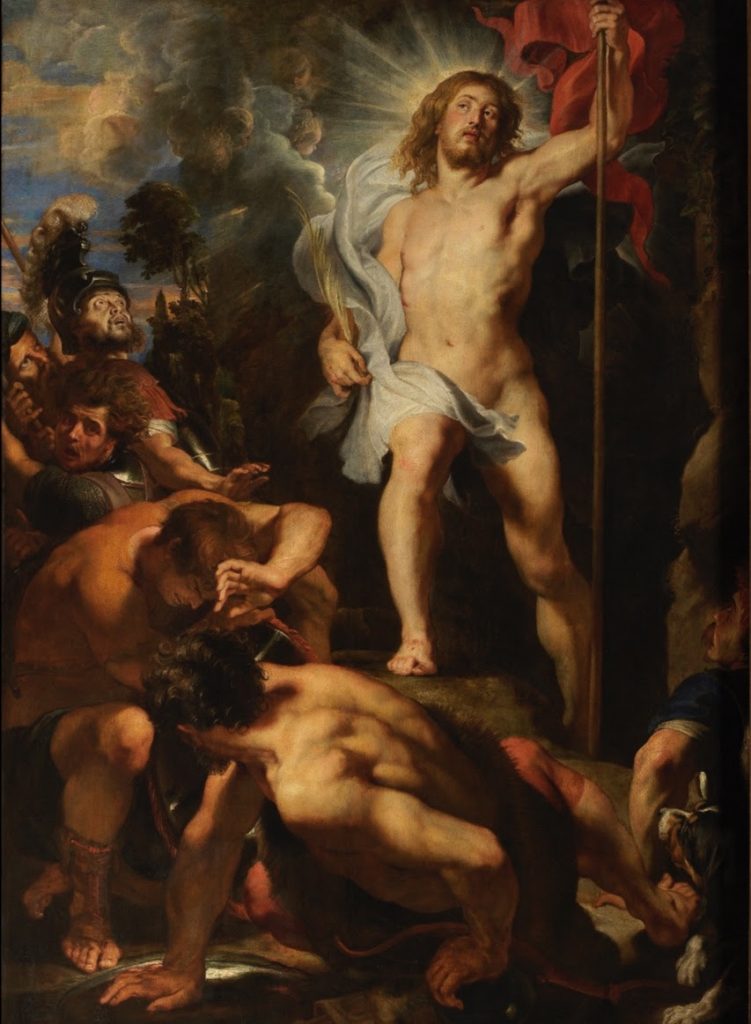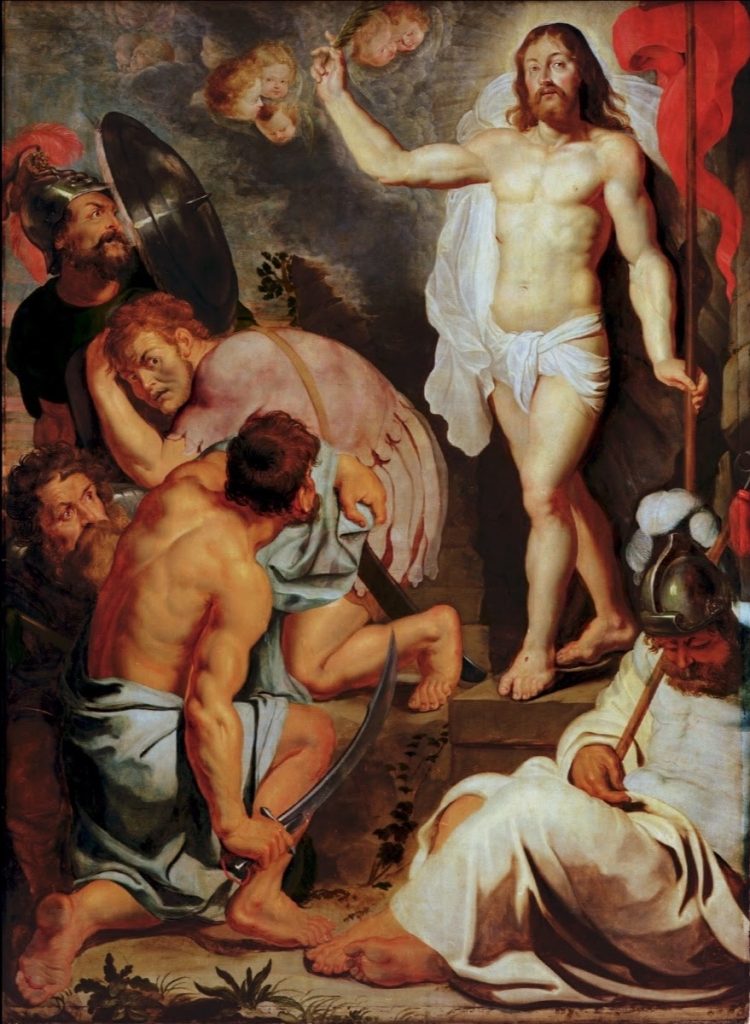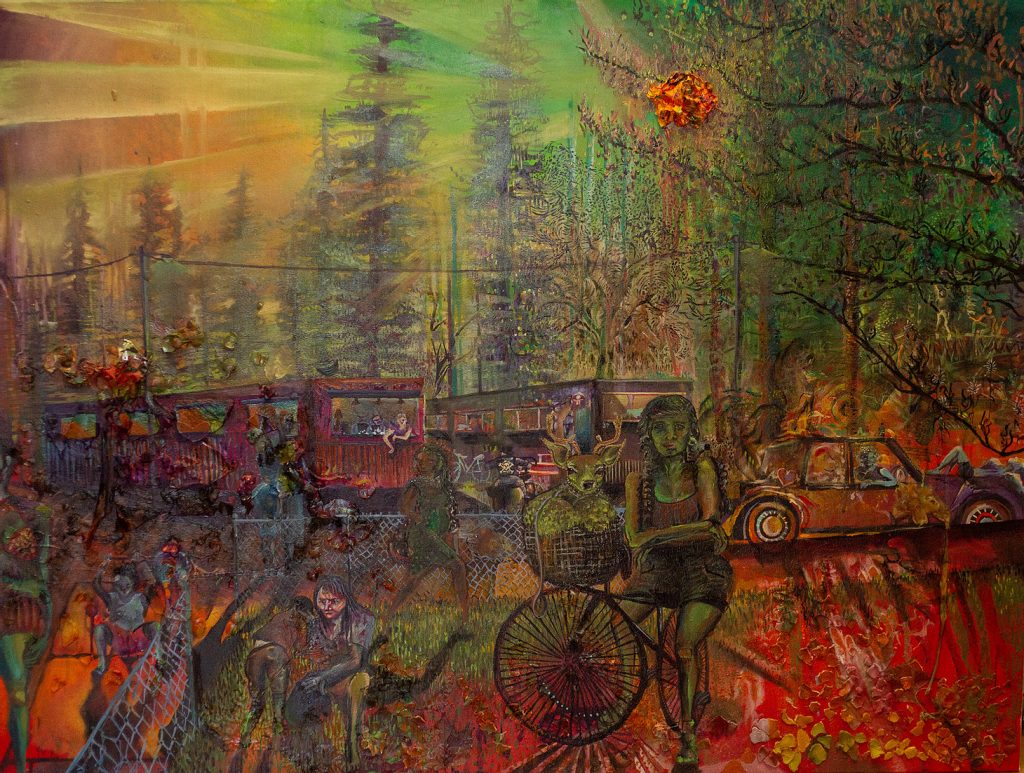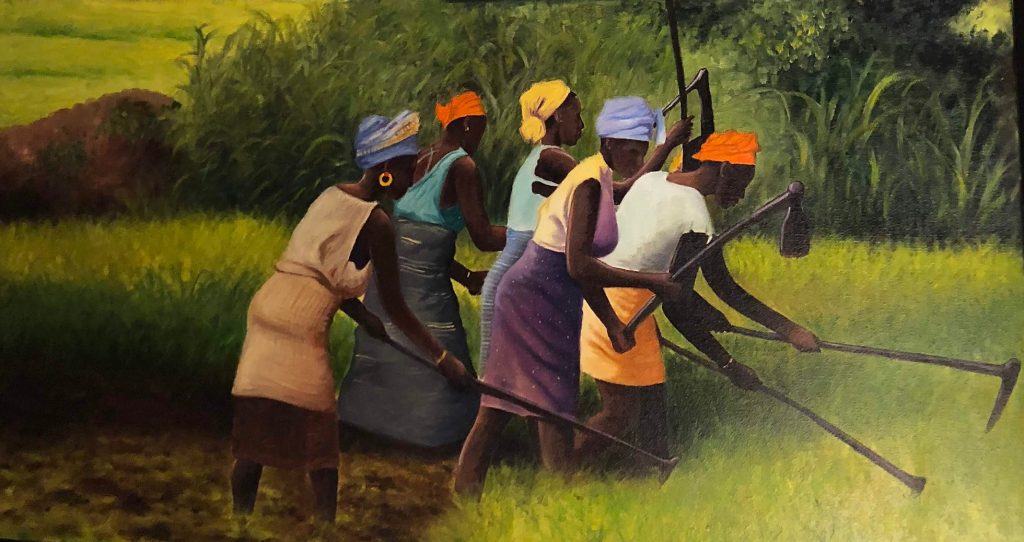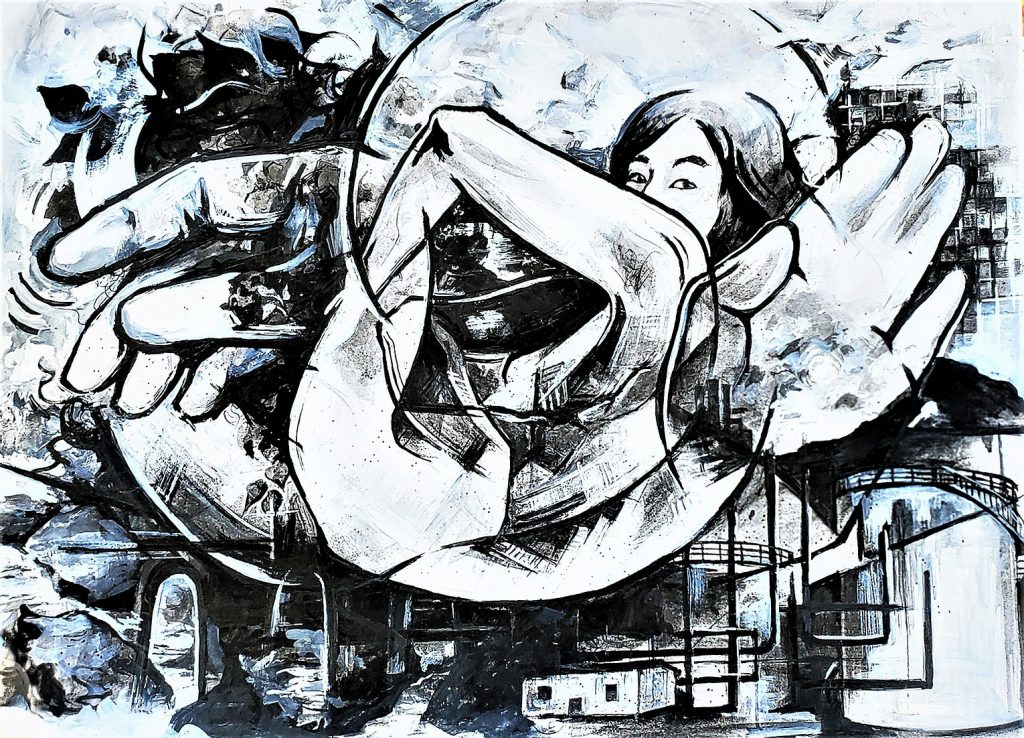For their 7th annual event, Ur Mara Museoa in Alkiza, Spain — which always creates one of the most innovative Slow Art Day extravaganzas in the world — invited local and international artists and performers to present art on the theme of nature and sustainability.

Their 2021 Slow Art Day featured performances and presentations by:
- Painters Idoia Iturri, Diana Vasina and Bea Gonzalez Rojo,
- Maria Giró Coll, a Catalan artist and cultural mediator, presented a sculpture by Jose Perez Ocaña, a Spanish artist who visited Alkiza in 1983
- Marionette artist Corrado Massaci (watch some of it in the video below)
The artists observed each other’s work, and shared opinions and reflections with the participants.
Below we provide photographs, details and videos about each of the performances, starting with the painter Idoia Iturri.
Idoia Iturri presented four art works, all created in 2021. Three of them form a trilogy named Pandemiaren Trilogia (Pandemic Trilogy). Haurtzaroa (Childhood), Maskara (Mask) and Duintasuna (Dignity). The fourth artwork is named Bizipoza (Joy of Life).
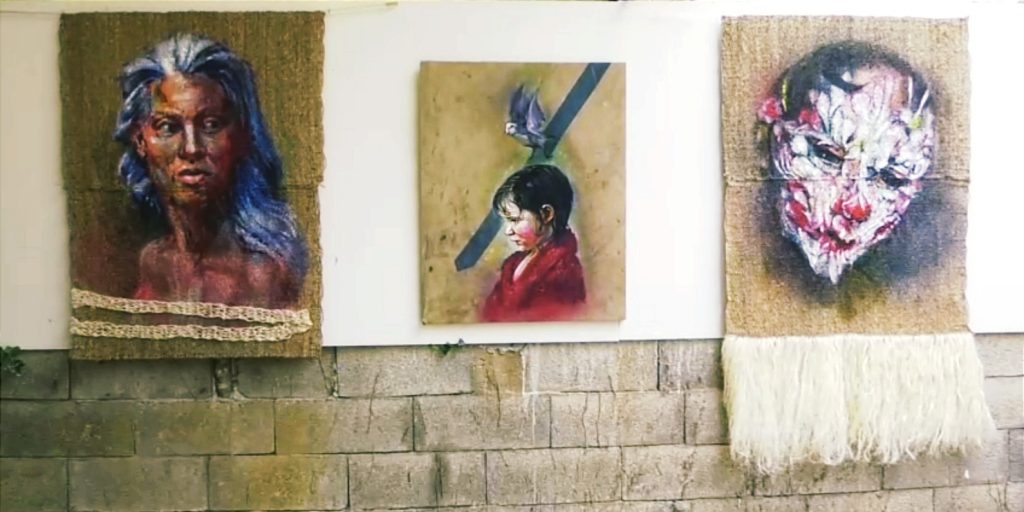
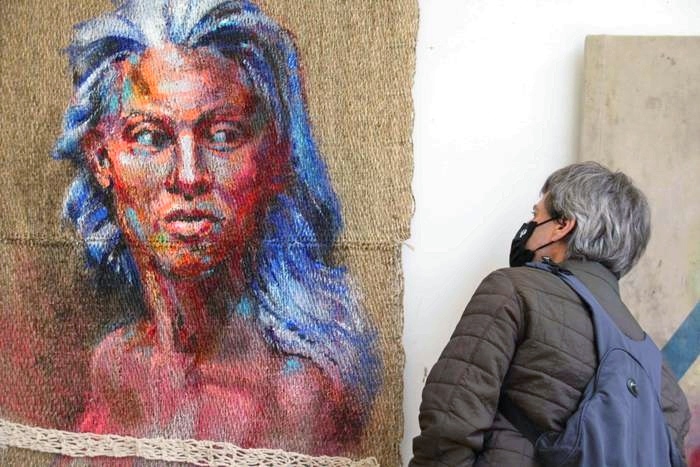
Diana Vasina presented four artworks created during the pandemic year, 2020-2021:
- Mirate Ojo (pantalla)
- MOVIMIENTO INTERMINABLE
- Densidad
- BIDEAN DENEAN BIDAIA
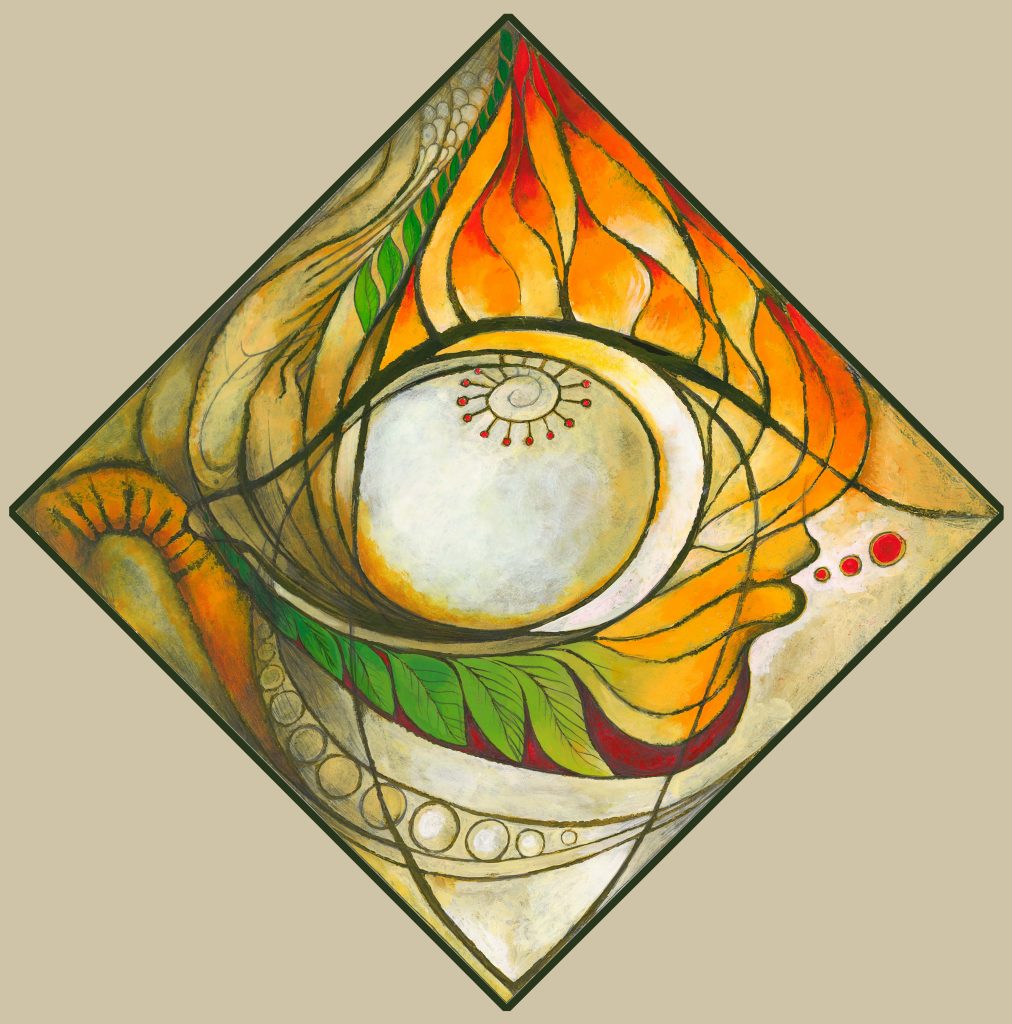
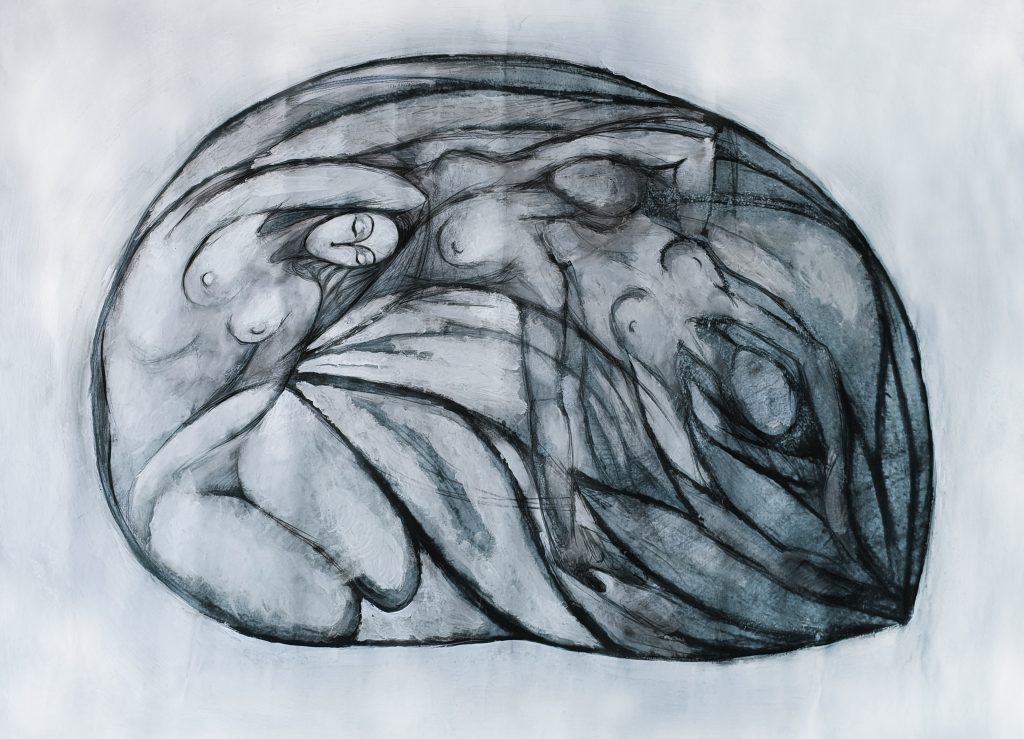
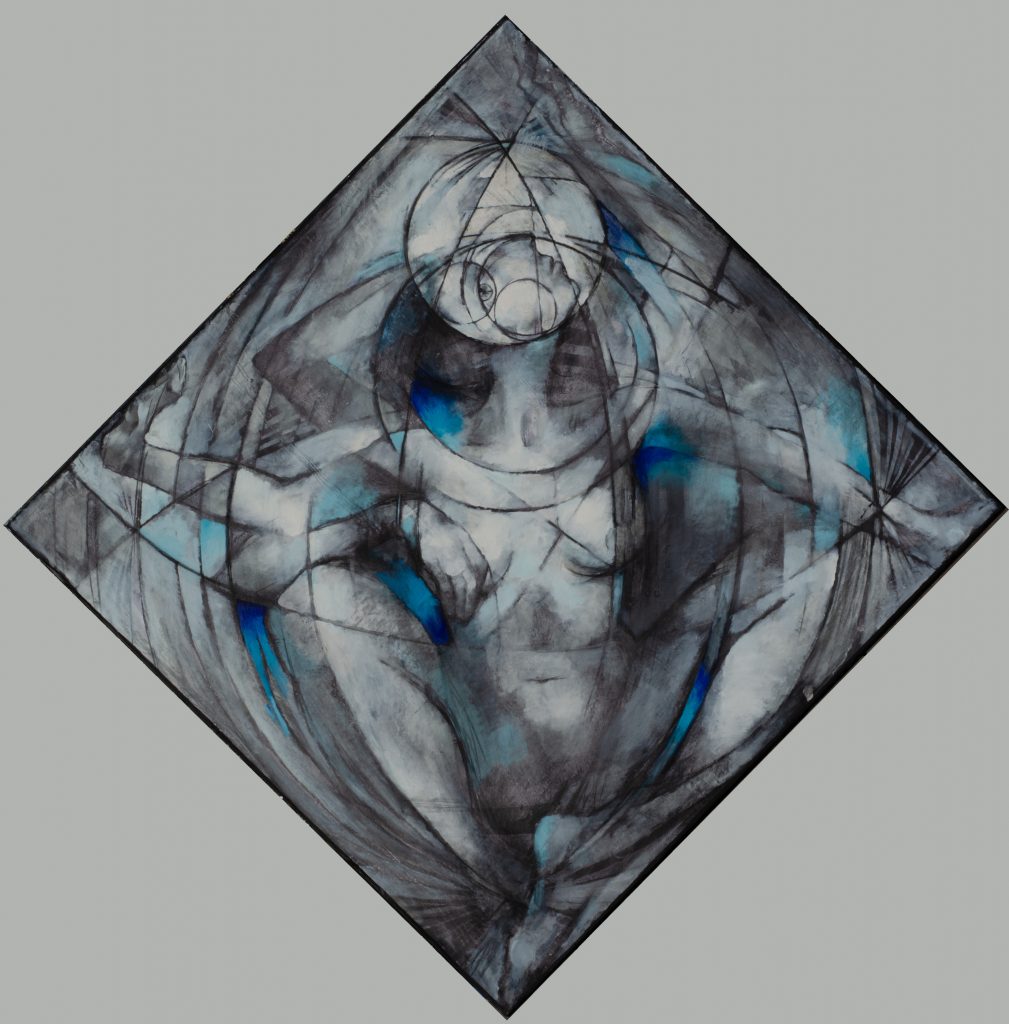
Beatriz González presented three art works from her TFG (final master’s thesis):
- ‘Abuhero’
- ‘Ehpurriajas’
- ‘Lombo’
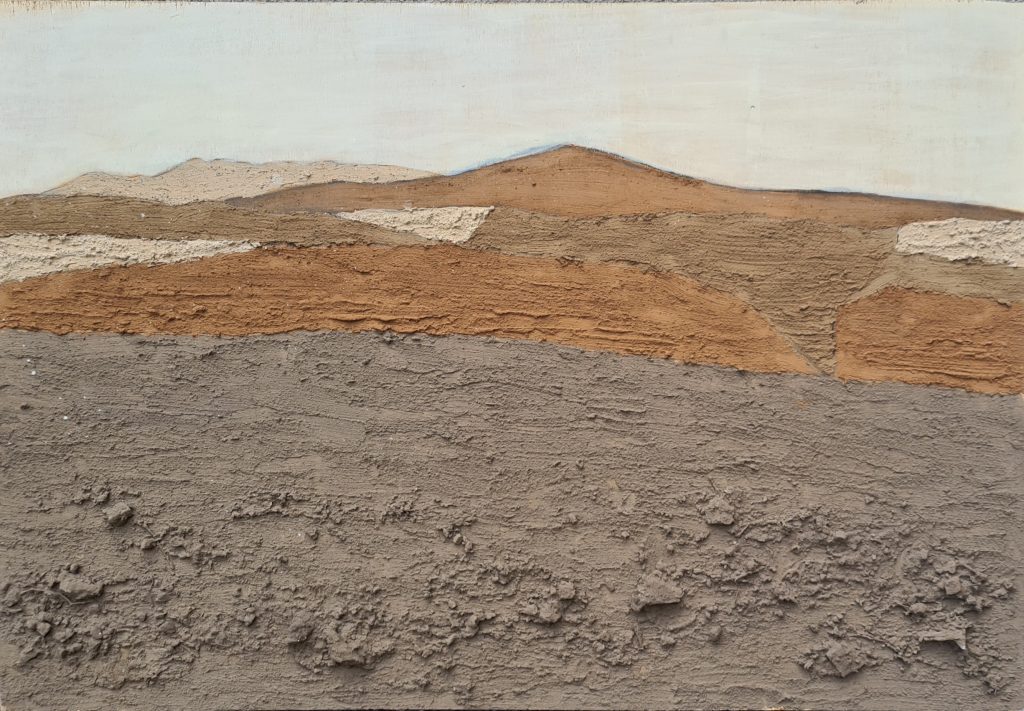
Maria Giró Coll, a Catalan artist and cultural mediator, presented a sculpture by Jose Perez Ocaña, a Spanish artist who visited Alkiza in 1983.
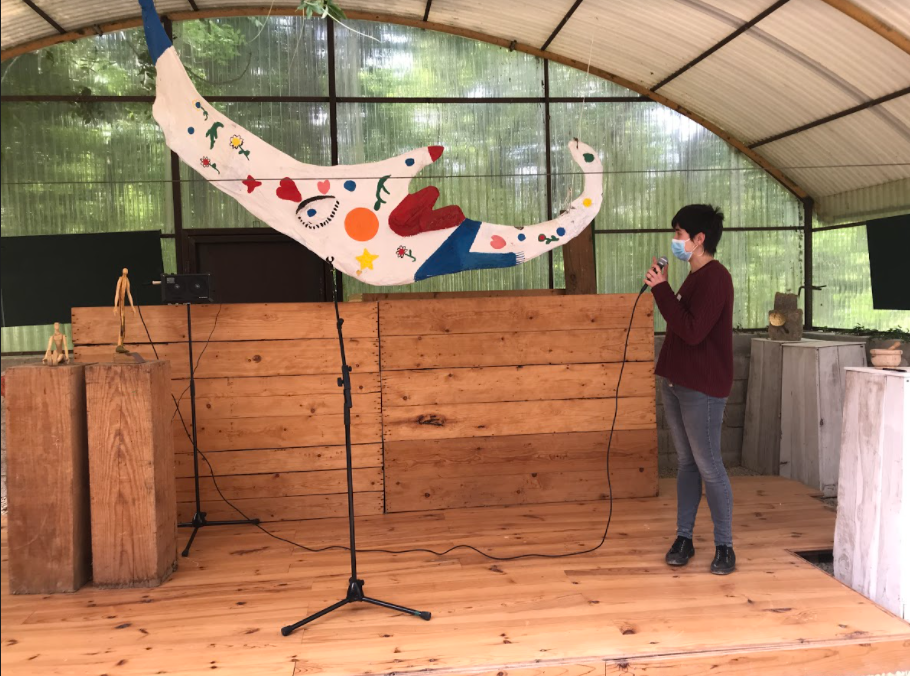
Following the event, Ur Mara Museoa created a 50-second video showing sequences of art pieces and marionettes, as well as museum curators, artists, performers, and visitors interacting with one another (all at a safe distance and wearing face masks). We love the spirit and warmth that Ur Mara Museoa always brings to their daylong Slow Art Day festival.
35 people attended the event, which was promoted both on the museum’s Facebook and Instagram accounts. They received many likes on their IG posts. Read (in Basque) a great article about the event by the local newspaper.
Again, we at Slow Art Day HQ always look forward to what Ur Mara Museoa produces, and we hope to finally visit the museum next year, when we plan a European summer tour of Slow Art Day sites.
And we can’t wait to see what Ur Mara Museoa comes up with for 2022.
Johanna, Jessica, Ashley and Phyl


